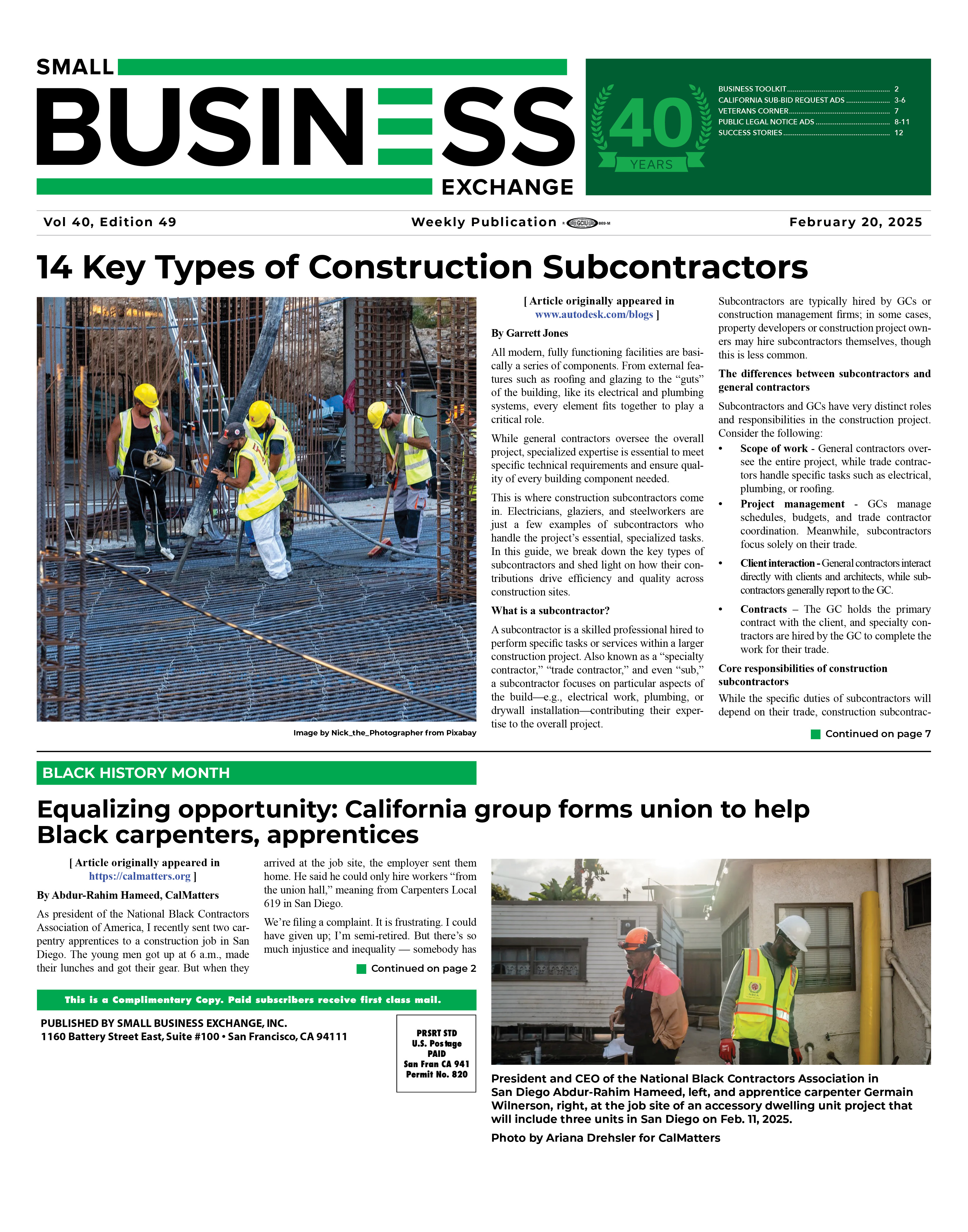|
|
Construction Sector Adds 4,000 Jobs in January; Nonresidential Job Gains Offset Declines in Residential as Average Wages Rose to $30.84 an Hour
02/07/2025
Tightening Labor Market Conditions, Amid Changes in Immigration Policy, Continued Under-Investments in Career & Technical Education, Could Undermine Employment Growth as Firms Struggle to Find Workers Construction sector employment increased by 4,000 positions in January as gains in nonresidential construction offset the decline in the residential sector, according to an analysis of new government data the Associated General Contractors of America released today. Association officials cautioned, however, that tightening labor market conditions may undermine future construction industry hiring. “The already tight labor market is getting tighter in the construction sector,” said Jeffrey Shoaf, the association’s chief executive officer. “Absent new investments in construction training and work authorization programs, it will be hard for firms to keep pace with demand.” In January, nonresidential construction firms added 4,400 workers, with gains of 1,100 in building construction and 5,600 in specialty trades, while heavy and civil engineering firms shed 2,300 jobs. Residential construction employment dipped by 200, as residential building added 1,900 positions, offset by a 2,100-job decline in specialty trades. Construction employment in January totaled 8,291,000, seasonally adjusted, an increase of 4,000 from December. Headcount has increased by 178,000 jobs or 2.2 percent during the past 12 months. Over the past 12 months, employment at nonresidential construction firms grew by 2.9% (137,800 jobs), a slight slowdown from the 3.1% increase (145,500 jobs) in the previous year. Residential construction employment rose by 1.2% (40,100 jobs) from January 2024 to last month, down from 1.4% (46,300 jobs) in the prior 12 months. A separate government report this week showed there were 217,000 job openings in construction at the end of December. Construction job openings—measured as a snapshot of available positions on the last day of each month—have declined for five consecutive months, dropping 50 percent year-over-year in December 2024. The sharp decline in openings suggests a turning point—potentially driven by hiring difficulties, a cooling labor market, or growing uncertainty about impending policy changes. Average hourly earnings for production and nonsupervisory employees in construction—covering most onsite craft workers as well as many office workers—climbed by 3.8 percent over the year to $36.54 per hour. Overall private sector pay for production workers rose 4.2 percent, to $30.84. That difference in hourly pay constituted a wage “premium” of just over 18 percent compared to the overall private sector. Association officials noted that nearly 80 percent of firms reported they are having a hard time finding enough workers to hire, according to the recently released AGC of America/Sage 2025 Construction Hiring & Business Outlook. They added that a growing number of firms are reporting workers are not showing up to job sites amid fears of increased immigration enforcement activities. “The only way firms will be able to keep pace with strong demand for construction is if there are enough people available to build,” Shoaf said. “That is why federal officials need to boost funding for construction education programs and expand lawful work authorization programs for people with construction skills.”
View the construction employment data. View the survey. Back To News |
|





